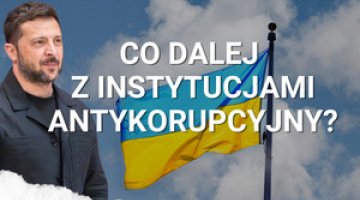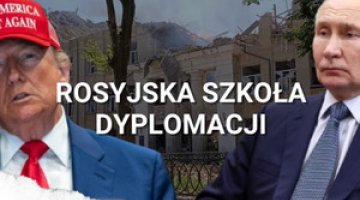Escalation of tension in the Donbas
- The most intense armed clashes between separatists and Ukrainian government forces since the beginning of this year have taken place in the last week in and around the town of Avdiyivka. After several days of exchanges of fire, on 29 January an initial artillery preparation (as of 5.00 am local time) was followed by an assault on Ukrainian positions (after 7.00 am) by subunits of the so-called Donetsk People’s Republic, with the highly likely intent of displacing the former from their positions and taking control of the industrial part of Avdiyivka (in Russian Авдеевка-Промзона). The fighting lasted almost without interruption for 19 hours, during which the separatists launched another assault (in the early afternoon), which they completed with partial success; there was then a Ukrainian counter-offensive (in the early evening) which recovered the positions lost in the previous hours. A similar scenario was repeated the following day, although there was only one attack by the separatists (in the morning) and one Ukrainian counterattack (in the evening). Both parties used all their available weaponry in these clashes, mainly tube artillery of 100-mm+ calibre, as well as tanks & armoured fighting vehicles. According to their own data, the Ukrainian side suffered 8 killed and 26 wounded in the two-day fighting; the separatists should be considered to have lost more men (due to the greater intensity of the offensive actions they carried out; as of this moment the Donetsk Republic’s forces have admitted to 4 dead and 7 injured in the fighting on 30 January). The area around Avdiyivka suffered about a third of the instances of exchange of fire recorded in the period 29-30 January (1200 incidents).
- In the morning of 31 January the situation calmed down significantly (although both sides continued to exchange fire), probably in large part due to the threat of a humanitarian disaster; as a result of the fighting supplies of water and electricity have been cut off in Avdiyivka, and the average local temperature is -18°C. Although Avdiyivka essentially remains under Ukrainian control (despite the statement by Kremlin spokesman Dmitry Peskov on 31 January), both sides have declared their readiness to cease fire and help with repairing the damage (or evacuating the population).
- On the evening of 30 January, the President of Ukraine Petro Poroshenko interrupted a visit to Berlin (on the occasion of the 25th anniversary of the two countries’ diplomatic relations), which his press secretary explained by the extraordinary situation, “close to a humanitarian disaster”, in Avdiyivka. Some time later the Deputy Head of the President’s Administration, Konstantin Yeliseyev, said that Poroshenko had ordered for a meeting to be arranged as soon as possible of the so-called trilateral contact group (representatives of Ukraine, Russia, the OSCE and the ‘separatists’). Earlier in the day, the deputy speaker of the Ukrainian parliament and the envoy for resolving the situation in Donbas, Iryna Herashchenko, said that the flare-up around Avdiyivka was connected to President Poroshenko’s visit to Berlin. In her opinion the Russian action was intended to “raise the stakes and intimidate the world by escalating the conflict”.
- On 30 January, Ukraine’s defence minister Stepan Poltorak reported that the separatists had used artillery and tanks near Avdiyivka which were prohibited by the Minsk agreements. In turn, the Ukrainian Foreign Ministry issued a statement on Avdiyivka condemning Russia’s actions “which ignore the commitments made within the framework of the Minsk agreements”, and accusing Moscow of committing “war crimes”. The ministry appealed for an immediate ceasefire. On 31 January, Ukraine’s permanent representative to the Council of Europe Dmytro Kuleba stated that he had reported the situation in Avdiyivka to the leaders of the organisation and appealed for help. A similar appeal was also made by Ukraine’s representative on the UN Security Council, Volodymyr Yelchenko. In the afternoon a meeting of the Military Council with President Poroshenko’s participation took place (within the framework of the National Security and Defence Council of Ukraine).
- On 31 January, Kremlin spokesman Dmitri Peskov declared that Ukraine was responsible for the escalation as it had “displayed aggression” towards the breakaway republics, and that “there is credible evidence” that on 30 January Ukrainian volunteer formations attempted to attack separatist-controlled territory. In Peskov’s assessment, recent events show that the Ukrainian side does not intend to implement the Minsk agreements.
Commentary
- As in many other parts of the Donbas, the clashes in the vicinity of Avdiyivka have been occurring regularly since the formal cessation of military action (February 2015) with varying degrees of intensity. Since the beginning of January this year, the region between Avdiyivka, Yasinovata and the airport in Donetsk has been one of the main areas of activity. According to a report by the OSCE mission, as of 27 January this area had seen 45% of all reported exchanges of fire (the report lists the next most frequently attacked regions as Svitlodarsk [20%], Mariupol [15%], Stanichne-Luhansk and the western part of the Luhansk region [5% each]; the remaining 10% covers other areas where exchanges of fire occasionally took place this January). On average between 1000 and 1500 exchanges of fire are recorded throughout the Donbas each day, with weapons of different calibres ranging from anti-materiel rifles to Grad BM-21 multiple rocket launchers (this applies to both sides of the conflict, neither of whom are adhering to the conditions of successive agreements to cease fire and withdraw their heavy weapons from the buffer zone established in February 2015). On 29 January, in connection with the intensification of the fighting at Avdiyivka, the number of exchanges of fire rose to 2300.
- The periodic intensification of fighting in the Donbas occurs whenever there is a major meeting or international talks in which the resolution of the situation in Ukraine’s east is the main or one of the main topics. Periodically these clashes become more serious, with operations lasting several days in connection with offensives launched and carried out by the separatists. However both sides commit armed provocations (as confirmed by the OSCE reports), and in some cases, saying which side first opened fire becomes merely a matter of convention. Compared with previous periods of intensified fighting, the clashes in and around Avdiyivka on 29-30 January were of moderate intensity, in terms of the forces and equipment involved (several tactical platoon groups on both sides), as well as the momentum of activities and losses. However, both parties remain ready to immediately resume their activities on a scale comparable to that observed in the summer of 2014 and the winter of 2015. In the present situation, the periodic intensification of fighting does not call for additional forces and resources to be sent imminently to the Donbas, which could indicate preparations for a major operation. Maintaining the status quo is still the best option for both parties, i.e. the Ukrainian government and the authorities of the self-proclaimed Donetsk and Luhansk Republics, and also – or so it should be assumed – for Russia, which provides military support for the separatists, but is also still a supplier of fuel and a large quantity of spare parts for the Ukrainian army.
- By consistently portraying Ukraine as guilty of the periodic escalations of the conflict and ‘de facto violation of the Minsk-2 agreements’, Moscow wants to convince its partners in the Normandy format, Berlin and Paris, to put pressure on Ukraine. Their aim is to force the Ukrainian side to agree to hold local elections in the separatist-controlled areas. Such a move would in practice mean the legitimisation of the current separatist elites, and that they would gain influence over Ukraine’s politics – as would Moscow indirectly, which supports them. It is possible that Russia is trying to use the current flare-up in the fighting to verify whether Germany and France, after Donald Trump’s rise to power in the USA (and upcoming elections in both countries), might be inclined to make more concessions regarding Ukraine and take the Russian position into account to a greater extent (above all, with regard to the elections in the part of the Donbas not controlled by Kyiv).
Andrzej Wilk
cooperation: Tadeusz Iwański i Wojciech Górecki





